 April through June is prime season for Tarpon fishing here in Southwest Florida. We’ve had a lot of people asking us how, when and where to land the Silver King. I’ve put together a how to guide based on my professional experience but kept it very basic. Unfortunately Tarpon don’t always like to follow the guidelines so you may need to tweak my recommendations based on their moods, tide, weather, temperature, location, appetite, did I mention moods? The best time to fish for Tarpon would be morning or evening just before sunset. The less boat traffic, the better. Always remember to bow or point your rod at the fish when they jump!
April through June is prime season for Tarpon fishing here in Southwest Florida. We’ve had a lot of people asking us how, when and where to land the Silver King. I’ve put together a how to guide based on my professional experience but kept it very basic. Unfortunately Tarpon don’t always like to follow the guidelines so you may need to tweak my recommendations based on their moods, tide, weather, temperature, location, appetite, did I mention moods? The best time to fish for Tarpon would be morning or evening just before sunset. The less boat traffic, the better. Always remember to bow or point your rod at the fish when they jump!
The Beaches off of Fort Myers and Sanibel Island tend to be the areas where we begin to see large pods of Tarpon early in the season. This is because they’re migrating North towards Boca Grande Pass, where they’ll feed before they head offshore to spawn. The best time for fishing these waters is morning or evening. Look for pods in and around 30 ft. of water.
The method for catching these Tarpon is on a drift while your free lining a live thread fin.
Tackle of choice is:
- 6,000 to 8,000 size spinning reel
- 7ft. to 7.6 ft heavy action rod
- 50 to 60 lb braided line
- 60 to 80 lb fluorocarbon leader
- 7/0, 8/0, or 9/0 circle hooks.

Inshore on the flats is often a common place to see a few free jumping tarpon. Look for rolling fish near creeks, troughs or the mouth of the river.
When your fishing the flats you can use fresh cut mullet placed strategically in or near a pot hole. You can also use thread fins (my preference).
Once your anchored you’ll need to attach a buoy to the anchor rope that you’ll then leave inside the boat. After your hooked up, drop your buoy. This improves your odds of landing the tarpon. You’ll be able to find you anchor again by spotting the buoy. Leaving you with no questions as to where you just jumped that last tarpon.
Tackle of choice is :
- 6,000 to 8,000 size spinning reel
- 7ft. to 7.6 ft heavy action rod
- 50 to 60 lb braided line
- 60 to 80 lb fluorocarbon leader
- 7/0, 8/0, or 9/0 circle hooks.
Boca Grande Pass is the most common and congested area to fish during tarpon season. I would recommend the “ditch”, to anyone who is experienced and doesn’t mind a lot, and I mean a lot of boat traffic and people with bad tempers.
Fishing with Live bait such as crabs seems to be the most effective.
Traditional live bait gear consists of:
- 7-7.6 heavy action rods.
- conventional reels
- Line: 50-100lb braided line or use 40 to 60lb. mono.
- Leader: 80-100 lb mono.
- 6-8 ounce weight
- 6/0, 7/0 or 8/0 circle hooks
The pass has it’s own rules of etiquette for fishing and they’re strictly enforced by hollering, bad language and behavior. You’ll learn to follow their rules once you’ve been mooned by an overweight hairy woman who gives you the finger and then tries to hop on your boat and beat you up, lol. True story. Entertaining non the less.
Whether your fishing in Boca Grande Pass, Redfish or Captiva Pass, you should follow these guidelines.
- Keep engine running at all times.
- DO NOT anchor.
- Begin your drift at the head of the pack by going around boats.
- Once hooked up move your tarpon out of the school of fish.
- No more than 3 fishing lines in the water at once.
- During April through June (prime Tarpon season), NO break away gear such as bobbers, floats, rubber bands, etc.. This is exclusive to Boca Grande Pass.
Standard Rules regulations for Tarpon fishing:
- Never gaff a fish.
- Leave the tarpon in the water while photographing and removing hooks.
- Tired fish can be revived by towing slowly forward with the boat.
- Using circle hooks increases the survival of fish.
Captain Wes Skinner Native Fort Myers Fishing Guide
I was born in Fort Myers and have been a lifelong resident. Growing up in this area was a special time. My uncle introduced me to the sport of fishing in the Fort Myers, Sanibel and Pine Island back bays and I’ve been hooked ever since! He taught me how to tie knots, throw a cast net and the best places to catch fish. I’ve learned that there are never two days of fishing that are ever the same. The only thing that’s consistent with fishing in S.W. Florida are the inconsistencies.
The fishing varies from day to day based on the moons, tides and weather etc… I’ve inherited his theories of fishing and acquired some of my own along the way. I’ve fished Fort Myers and Sanibel Island, my whole life and spent a lot of time on these waterways scouting for areas which may be rich in Snook, Redfish, Trout and Tarpon.
Now I have the opportunity to guide my clients through those Mangrove Islands, that provided me with endless hours of fishing memories. Come spend a day with me, so I can show you the beauty of fishing the back bays of Fort Myers, Naples, and Sanibel Island.
Learn more about fishing with Captain Wes by clicking here.

Tarpon create a memory that is hard to beat when you hook one of these amazing fish. The amazing acrobatics that defy gravity create a spectacle guaranteed to crack a smile on even the saltiest of fishermen. The official scientific name for Tarpon is Megalops atlanticus but you’ll find locals in the Gulf of Mexico, both sides of Florida and up the East Coast of the United States refer to them in slang terms as “Poon” or “The Silver King”. Tarpon by their nature of jumping, twisting and pulling while out of the water create a challenge in keeping the fish on the line long enough to bring boat-side. This is where the term “Bow To the King” comes from as when a tarpon goes vertical and takes to the air, the fishermen must bow to the tarpon to help prevent the tarpon de-hooking itself.
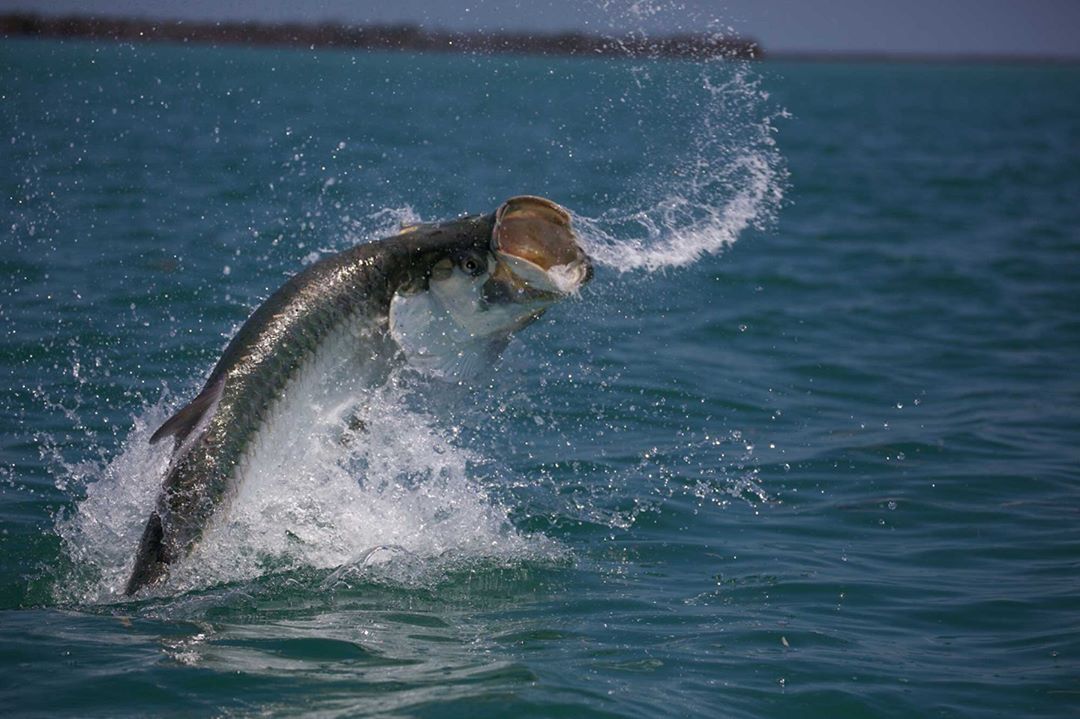
In the United States, the tarpon is a protected fish with very little commercial value for harvesting. As such there is little research to date on these beautfiful fish with much of the migrations, unique habits and life cycle still a mystery. When tarpon show up in skinny water during their migration they attract fishermen from all over the Gulf of Mexico and both sides of Florida who want to put their gear and them.
These fish can live for up to 55 years and in that time frame can reach mammoth proportions. The current fly-caught record is a 202.5-pound fish taken in Homosassa, Florida, by James Holland.
It is not uncommon to see a pod (group) of Tarpon rolling and gulping air. This highlights a unique function of the tarpon’s swim bladder as it serves as an auxiliary respiratory organ as opposed to acting as ballast for most fish. The tarpon’s swim bladder is lined with tiny blood vessels capable of removing oxygen from the air while gulping or rolling. This is such a critical function for these fish at certain times of their life that juvenile tarpon must have access to gulf air for survival. The frequency of the tarpon gulping is dictated by how much oxygen is found in the water.
 While picky at times, Tarpon can be super aggressive while feeding. What is funny is that even the largest tarpon will eat ridiculously small prey….the saying, “Bigger the Bait, Bigger the Fish Caught” is not always the case when fishing for tarpon. When tarpon are feeding they’ll dine on about anything including shrimps, crabs, and worms or flys & lures meant to mimic them. They do however prefer baitfish such as spanish sardines, pinfish and mullet. Tarpon feature an extremely boney mouth and swallow their prey whole so setting the hook is critical to bringing the fish in.
While picky at times, Tarpon can be super aggressive while feeding. What is funny is that even the largest tarpon will eat ridiculously small prey….the saying, “Bigger the Bait, Bigger the Fish Caught” is not always the case when fishing for tarpon. When tarpon are feeding they’ll dine on about anything including shrimps, crabs, and worms or flys & lures meant to mimic them. They do however prefer baitfish such as spanish sardines, pinfish and mullet. Tarpon feature an extremely boney mouth and swallow their prey whole so setting the hook is critical to bringing the fish in.
Here is a great example of Tarpon Crab or Pass Crab, a favorite bait used to catch tarpon in SW Florida. These crabs are the size of a silver dollar and are favorites by charter captains during an outgoing tide or low light conditions when the silhouette works to the angler’s advantage against the back-drop of the water.

If you love Tarpon, check out these great designs from our Tarpon Collection of decals, apparel and hats. CLICK HERE
Check out our Pat Ford Tarpon Gallery
You can learn more about Pat Ford and his amazing adventures by clicking here.

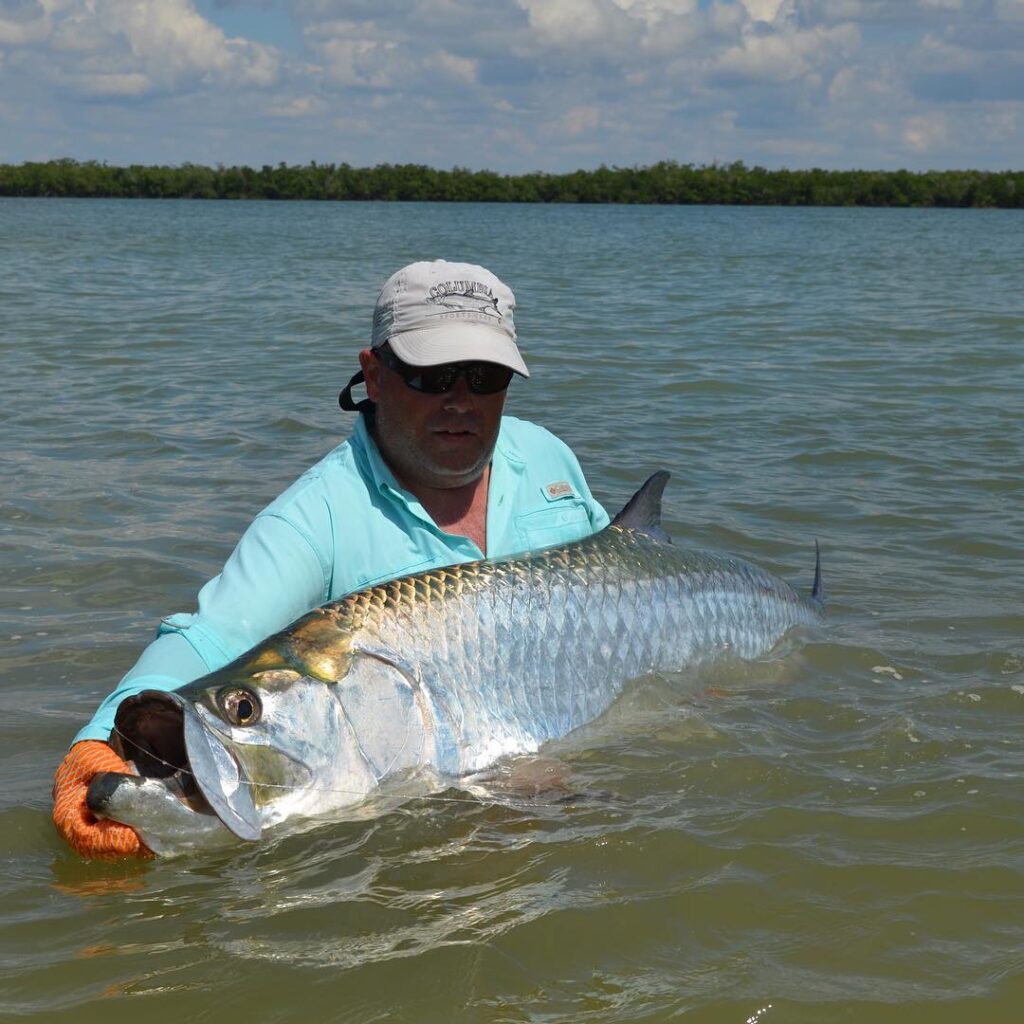

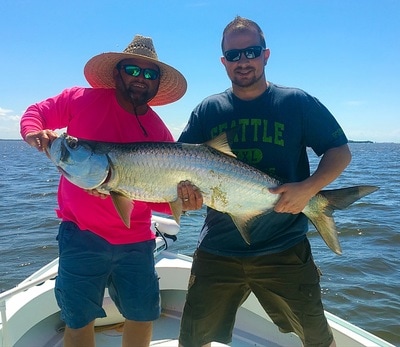
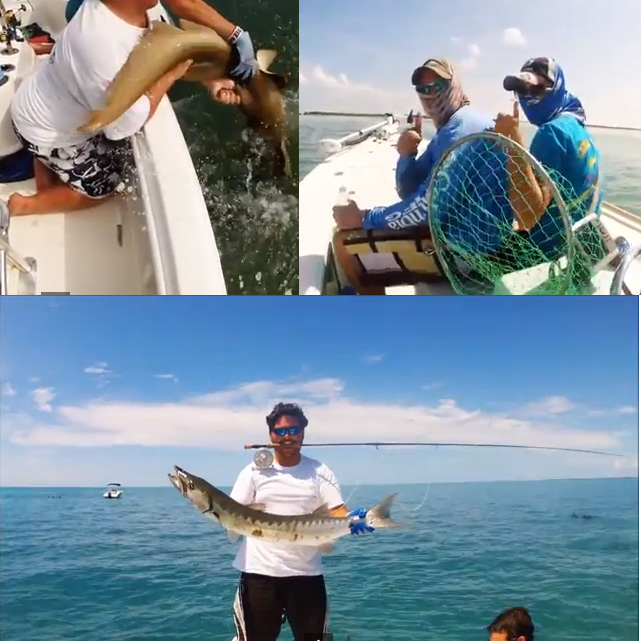
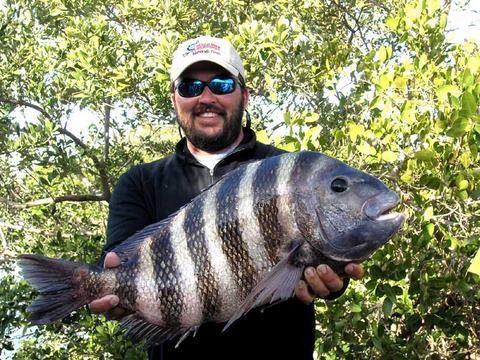
Helpful guide. Thanks for the article.